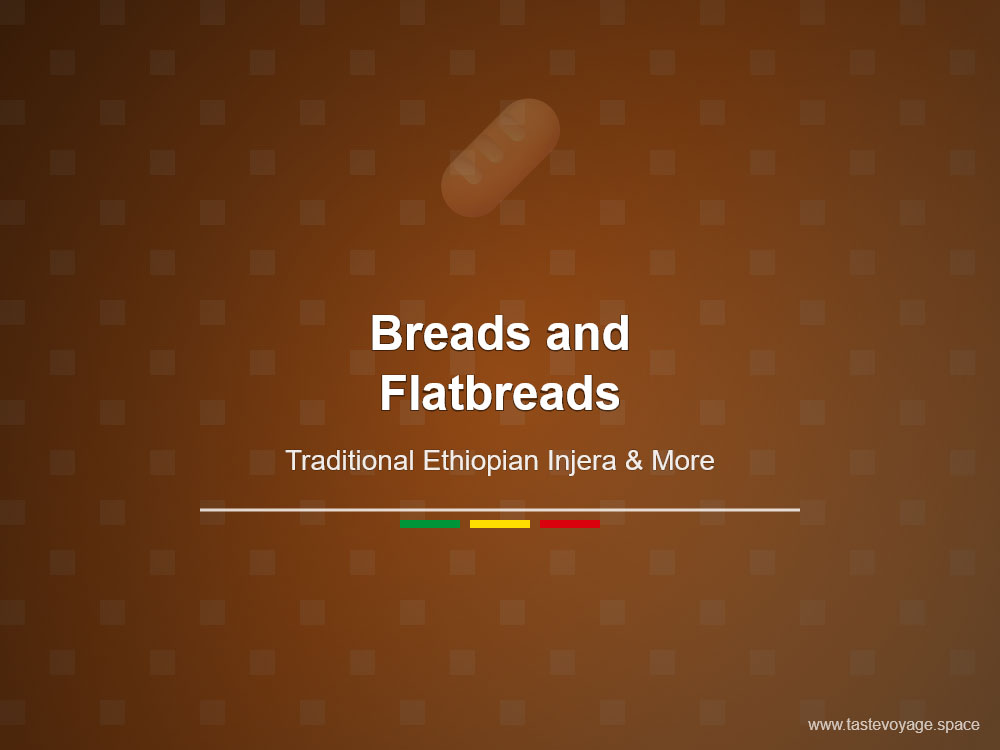Quick Ethiopian Injera Recipe for Busy Weeknights
Travel the World Through Food >> Breads and Flatbreads>>Ethiopian Cuisine>> Quick Ethiopian Injera Recipe for Busy Weeknights
Quick Ethiopian Injera Recipe for Busy Weeknights
Discover the Cultural Richness of Injera: A Quick Ethiopian Recipe for Busy Weeknights
Ethiopian Cuisine offers a unique and vibrant culinary experience, with Injera standing out as its most iconic dish. Known for its spongy texture and tangy flavor, Injera is much more than just a bread—it embodies centuries of tradition and community bond. Even on busy weeknights, there’s a way to enjoy this remarkable dish that celebrates Ethiopian heritage and culinary ingenuity.
The Cultural Significance of Injera
Injera is at the heart of Ethiopian dining culture. It is traditionally served during communal meals, where friends and family gather around a large platter of various flavorful Stews and vegetables, all placed atop a shared piece of Injera. This practice fosters a sense of togetherness and shared tradition. The dish symbolizes hospitality and respect, making it an essential part of social and celebratory occasions.
Made from teff, a tiny grain native to Ethiopia, Injera carries deep cultural roots. Teff is valued not only for its nutritional benefits but also for its historical importance. The process of fermenting the batter enhances its flavor and digestibility, reflecting time-honored culinary techniques passed down through generations. The lively, slightly sour taste of Injera adds a distinctive character to Ethiopian meals, setting it apart from other breads worldwide.
Culinary Significance and Unique Characteristics
What makes Injera truly special is its unique texture and flavor profile. Its porous surface acts as a natural vessel for an array of flavorful stews, such as Doro Wat (spicy chicken stew) or Atakilt Wat (vegetable stew). The sponginess allows the bread to soak up rich sauces, creating a harmonious blend of taste in every bite.
Injera’s versatility goes beyond its role as a base. It functions as both a plate and utensils, with diners tearing off pieces to scoop up their favorite dishes. This method of eating emphasizes tactile engagement and shared experience, reinforcing bonds among diners.
Nutritionally, Injera offers a healthy and wholesome option. Made from teff, it is gluten-free, rich in dietary fiber, and packed with essential minerals. This combination of health benefits and cultural importance makes Injera a beloved staple that resonates with both tradition and modern dietary preferences.
A Quick and Respectful Approach for Busy Weeknights
While traditional Injera preparation involves fermentation and takes time, modern techniques and quick recipes enable busy households to enjoy this cultural treasure without lengthy efforts. You can find simplified recipes that retain the authentic flavor while fitting into a hectic schedule, making it easier than ever to bring Ethiopian culinary heritage into your home.
Enjoying Injera on a weeknight offers more than sustenance; it provides an opportunity to connect with a rich cultural tradition. It invites you to explore the flavors and stories embedded in every bite, fostering appreciation for Ethiopia’s unique culinary landscape.
Embrace the Tradition
Injera is more than just food—it’s a reflection of community, history, and resilience. Its distinctive qualities and cultural significance make it a remarkable dish worth celebrating daily. Whether you’re new to Ethiopian cuisine or a seasoned enthusiast, discovering quick ways to prepare Injera allows you to partake in a tradition that spans centuries and continents.
Invite the spirit of Ethiopian hospitality into your home. Embrace the vibrant flavors and cultural depth of Injera, and let it transform your busy weeknights into moments of culinary discovery and appreciation.
